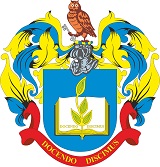Please use this identifier to cite or link to this item:
http://46.63.9.20:88/jspui/handle/123456789/671| Title: | Зарубіжні наукові підходи до диференціації навчання. |
| Other Titles: | ЗАРУБЕЖНЫЕ НАУЧНЫЕ ПОДХОДЫ ДИФФЕРЕНЦИАЦИИ ОБУЧЕНИЯ. FOREIGN SCIENTIFIC APPROACHES OF DIFFERENTIAL EDUCATION. |
| Authors: | Ілініцька, Н.С. |
| Keywords: | диференціація диференціація навчання індивідуалізація навчання навчальний процес зарубіжна освіта дифференциация дифференциация обучения индивидуализация обучения учебный процесс зарубежное образование differentiation differentiation of teaching individualization of teaching educational process foreign education |
| Issue Date: | 2017 |
| Publisher: | Київ : Вид-во НПУ імені М. П. Драгоманова |
| Citation: | Ілініцька Н.С. Зарубіжні наукові підходи до диференціації навчання. Науковий часопис Національного педагогічного університету імені М.П.Драгоманова. Серія 16. Творча особистість учителя : проблеми теорії і практики : збірник наукових праць. – Випуск 29 (39) / ред.кол. : Н. В. Гузій (відп. ред.). – Київ : Вид-во НПУ імені М. П. Драгоманова, 2017. – С. 42-46. |
| Abstract: | У статті розглянуто питання диференціації навчання у зарубіжних наукових дослідженнях. Проаналізовані шляхи вирішення проблеми індивідуалізації та диференціації навчання в зарубіжних країнах. Висвітлено характерні ознаки система середньої освіти другої половини ХХ століття на Заході. До них відносяться: • відсутність єдності (нерівноцінність статусів, змісту, рівнів освіти, перспектив подальшого навчання і соціального устрою);
• дуалізм (наявність двох провідних напрямків - академічного та практичного);
• антидемократичні принципи організації. Відмічені види диференціації в шкільній освіті:1) внутрішня диференціація; 2) дидактична диференціація;
3) вертикальна диференціація; 4) горизонтальна диференціація. В статье рассматриваются вопросы дифференциации обучения в зарубежных научных исследованиях. Проанализированы пути решения проблемы индивидуализации и дифференциации обучения в зарубежных странах. Освещены характерные признаки системы среднего образования второй половины ХХ века на Западе. К ним относятся: – отсутствие единства (неравноценности статусов, содержания, уровней образования, перспектив дальнейшего обучения и социального устройства); – дуализм (наличие двух ведущих направлений - академического и практического); –антидемократические принципы организации. Выделены виды дифференциации в школьном образовании: 1) внутренняя дифференциация; 2) дидактическая дифференциация;3) вертикальная дифференциация; 4) горизонтальная дифференциация. The article deals with the questions of differentiation of study in foreign scientific researches. The ways of solving the problem of individualization and differentiation of training in foreign countries are analyzed. The characteristic features of the secondary education system of the second half of the twentieth century in the West are highlighted. These include: • the lack of unity (unequal status, content, levels of education, prospects for further education and social organization);• dualism (the presence of two leading areas - academic and practical);• Antidemocratic principles of organization. The marked types of differentiation in school education: 1) internal differentiation - is a methodical organization of the learning process in the middle of the course system. These are the differentiated tasks for teaching, the choice of methods, tools, and forms of teacher assistance teacher; 2) didactic differentiation is a form of formal organization of students for the fulfillment of a particular learning task: individual, partner, group, mixed methods; 3) vertical differentiation - this is the distribution of courses for students with different levels of success; 4) horizontal differentiation - the distribution of students on the principle of equal success in all subjects. It is taken into account that in foreign educational experience there is a design of differentiated tasks and exercises, in which the following factors are revealed: 1) the degree of student acquaintance with the material; 2) the method of presenting a task (written or oral); 3) an assessment of whether this is an independent task or included in the system; 4) the number of proposed monuments, other types of support. During the course the students receive a variety of help: checking their perception of the problem and discussing with the teacher the process of its implementation; auxiliary questions when discussing any problem; review notebooks and fix bugs. Analyzing the practice of working with gifted students, it became clear that there are two alternative strategies to their learning: acceleration and enrichment. In foreign countries, the strategy of accelerating the pace of learning or acceleration is becoming increasingly popular. There are the following variants of acceleration: 1) early admission to school; 2) jumping through the class; 3) the formation of schools and classes with accelerated training; 4) acceleration by object or group of objects; 5) preliminary study of the university course. |
| URI: | http://46.63.9.20:88/jspui/handle/123456789/671 |
| Appears in Collections: | Кафедра музикознавства, інструментальної підготовки та методики музичної освіти |
Files in This Item:
| File | Description | Size | Format | |
|---|---|---|---|---|
| Стаття Ілініцька Н.С. Зарубіжні підходи диференціації....docx | стаття | 35,07 kB | Microsoft Word XML | View/Open |
Items in DSpace are protected by copyright, with all rights reserved, unless otherwise indicated.
